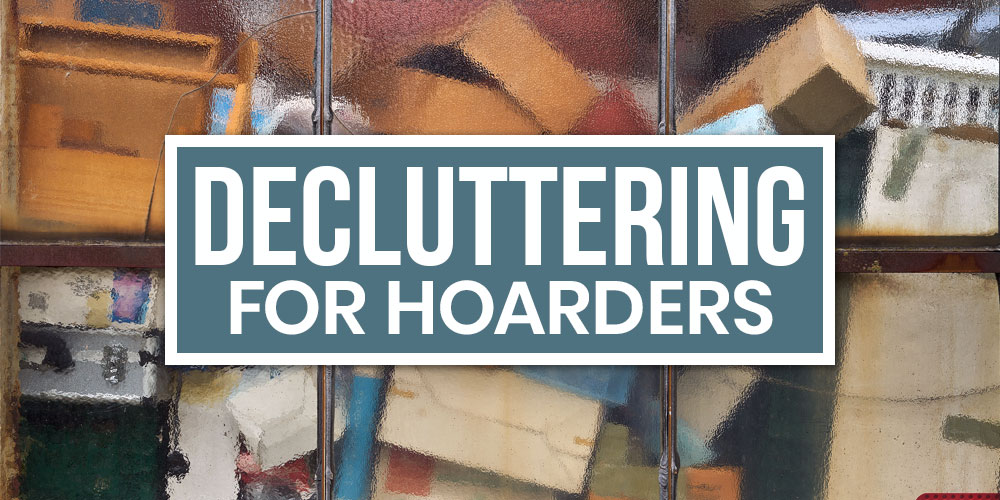
NAVIGATION

If you suffer from hoarding as a mental health condition or a similar issue, consider seeking professional help. Hoarding and similar mental health concerns are serious issues that require medical attention. Reach out to a mental health professional if you or someone close to you is struggling with hoarding disorder and related concerns. Though the term “hoarder” is used throughout the article, it should not be associated with hoarding as a mental disorder.

Hi, I’m Ryan
When I first started out in my journey with minimalism, I sometimes had strong tendencies to hold onto things I didn’t need. Casually hoarding fewer sentimental or potentially useful possessions and routinely getting rid of things has helped me feel freer and lighter.

Finding tangible strategies to help declutter when you’re a hoarder may not be easy at first. However, the more frequently you take the intentional time to declutter your space, the easier the process will become down the line.
How To Declutter When You’re A Hoarder

Casual hoarding is a fairly common experience. Hoarding items in your home isn’t a bad thing right off the bat. Most people who end up collecting things overtime start out with good intentions.
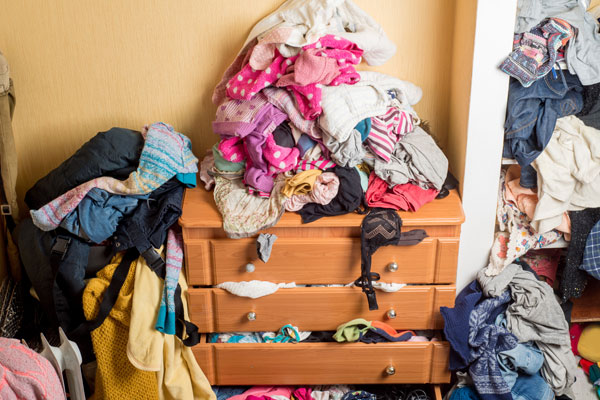 Maybe you have trouble throwing out birthday cards with meaningful hand written notes inside. You may keep dishes you never use from your wedding, just because they’re an extremely nice set. Maybe you keep your old bike that you never ride just in case you want to take up cycling again.
Maybe you have trouble throwing out birthday cards with meaningful hand written notes inside. You may keep dishes you never use from your wedding, just because they’re an extremely nice set. Maybe you keep your old bike that you never ride just in case you want to take up cycling again.
There are lots of harmless instincts we have about keeping things that are meaningful or useful to us. However, when we assign meaning to every single thing we own, those things will quickly compound into a disorganized hoarder house. However, this issue can actually be quite simple to remedy.
Cut The Clutter Quickly: 10 Decluttering Tips For Hoarders

Luckily, there are ways to declutter our homes without sacrificing things that truly matter to us. Decluttering as a hoarder isn’t an all or nothing game. There are lots of small ways to cut through the endless clutter, even if you’ve created quite the collection over time.
1Start By Getting Rid Of Disposable Items
By starting with the items that are disposable, you have an immediate feedback loop as you get rid of things. Your items go straight into the trash or recycle bin! As you declutter waste, you’ll see the progress visibly, which can boost morale and give you the confidence to keep going.

2Toss “Just In Case” Items
Nothing is more dangerous to a natural packrat than the thought, “maybe I’ll use this later on.” While innocent at first, saving items for later is a surefire way to let the clutter pile get bigger and bigger. When decluttering your house as a hoarder, it’s imperative that you make an intentional effort to toss the items that you haven’t used in years.
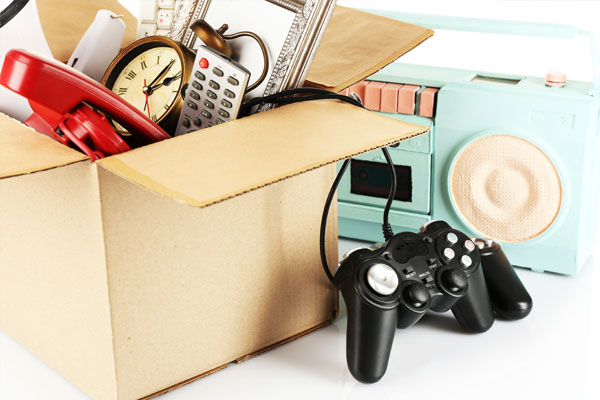 It’s easy to feel compelled to keep these “just in case” items around. These items often have perceived value attached to them, because of a purpose they once served or could serve in the future. However, if they don’t serve that purpose in the present, let them go.
It’s easy to feel compelled to keep these “just in case” items around. These items often have perceived value attached to them, because of a purpose they once served or could serve in the future. However, if they don’t serve that purpose in the present, let them go.
No keeping your surfboard even though you haven’t lived by the beach in years, storing the camping gear you’ve kept just in case you want to get back into camping, or hanging on to the bridesmaid dress you’ve only worn once. While it may be tempting to give in to these reasons, I can assure you that every time I’ve gotten rid of an item I rarely use, I was happy I did it.
There are tons of minimalist habits and rules out there to encourage getting rid of “just in case” items, like the 90/90 rule. I love using minimalist rules like these to help me think through my decisions as I declutter.
3Tackle High-Density Clutter Areas
Sometimes hoarding items is a problem out in the open or throughout an entire home. However, more often than not, I find that the issues with hoarding clutter are primarily concentrated in a single, high-density area of the home. Maybe you’ve been throwing miscellaneous items under your bed or in your closet for years, and now just looking at the space makes your skin crawl.
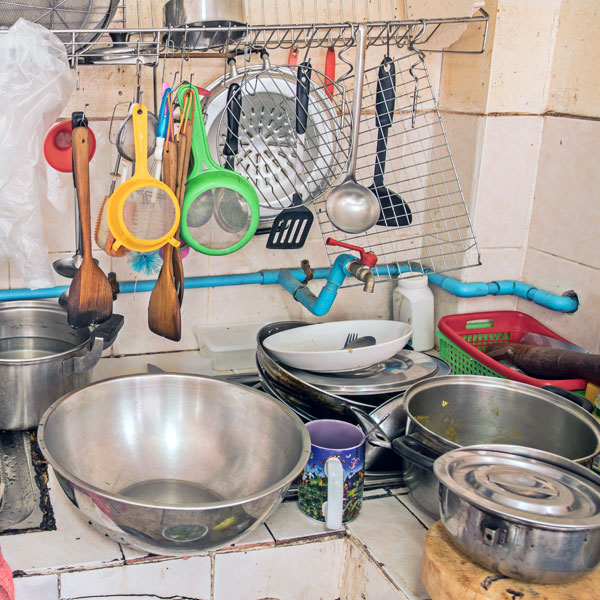 When this is the case, it’s hard to know exactly where to start to declutter. Tackling those high-density clutter areas is, however, crucial to decluttering your house as a hoarder.
When this is the case, it’s hard to know exactly where to start to declutter. Tackling those high-density clutter areas is, however, crucial to decluttering your house as a hoarder.
My best suggestion here would be to face your fears by committing to decluttering these areas right off the bat. Tell yourself that it’s time to face your closet nightmare, and stick to your word. Then, dive in by going category by category.
If you try to declutter the entire space at once with no system, you’ll burn out quickly. Instead, pick a category to begin with like clothing, books, or trinkets, and remove every item that applies to that category specifically.
Decluttering in chunks will make the process more manageable and, in turn, it will go faster.
4Declutter Five Minutes At A Time
Tackling the decluttering process a mere five minutes at a time is another smart way to declutter as a hoarder. 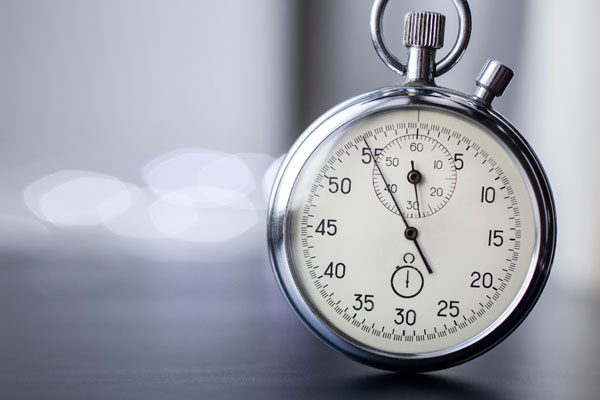
Decluttering can be hard for hoarders because of how overwhelming it feels to imagine going through all of your stuff at once. Like I said before, high-density areas are often huge culprits when it comes to tackling clutter that has been built up over the course of many years.
However, if you commit to decluttering in brief five-minute increments, you’ll be able to declutter your house faster without getting overwhelmed, and you’ll start to see progress. As you observe the clutter decreasing, you’ll feel inspired to keep going.
5Repurpose Your Memorabilia
Holding onto memorabilia that’s meaningful is one of the biggest ways hoarders collect clutter. The idea behind keeping personal items is endearing, but can quickly turn your entire home into a total mess.
There are ways to honor the person who left you a sweet note or kind word without saving every card they ever gave you. Finding a new purpose for items like hand-made cards, old photographs, or other scraps and ephemera is a great way to get paper clutter off of your floor and desktop without forgoing sentimentality altogether.
Ten Ideas To Repurpose Sentimental Items
- Turn old T-shirts into a T-shirt quilt
- Make a frame collage of birthday cards
- Put old recipes on display in your kitchen
- Start a scrapbook
- Use unused dishes as planters or trinket holders
- Make a shadow box
- Press old flowers
- Display photos in frames or on a bulletin board
- Use postcards as bookmarks
- Hang unused trinkets on the walls

6Disprove The Money Myth
I know a lot of naturally inclined hoarders who tend to hang onto every little item out of fear that they won’t have enough money to replace it. Now, I’m not suggesting anyone can just get rid of everything they own in one fell swoop and be financially fine. Everyone has a different financial situation.
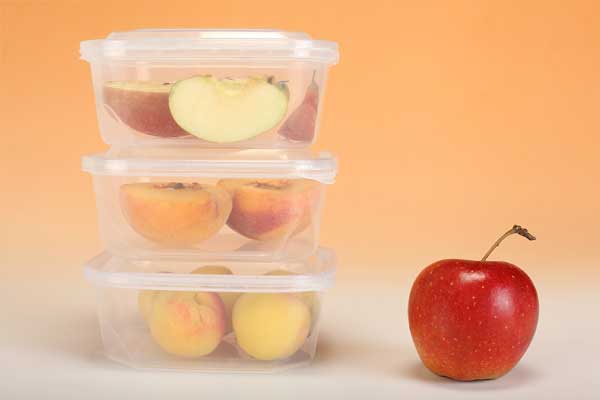 Sometimes keeping items makes financial sense. You might wash out your to-go containers instead of buying Tupperware, wear thrifted clothes instead of buying new ones, or repurpose old dishes as planters, vases, or trinket trays. Habits like this are less wasteful as well as financially conscious.
Sometimes keeping items makes financial sense. You might wash out your to-go containers instead of buying Tupperware, wear thrifted clothes instead of buying new ones, or repurpose old dishes as planters, vases, or trinket trays. Habits like this are less wasteful as well as financially conscious.
Regardless of your personal financial standing, I do believe there are ways to get rid of excess clutter and avoid the trap of keeping every little thing out of fear. One of the best ways to identify if saving an item is a wise financial move or an unnecessary decision is to actually identify the item’s purpose and the ways it could save you money.
I also use the 20/20 minimalist decluttering rule as a tool to help me decipher which items truly make sense to hang onto and which ones don’t. The rule states that if you can replace the item in 20 minutes for under $20, it probably makes sense to let it go.
7Let Go Of Items From The Past
Hanging onto items that once belonged to a loved one is another trap that I often see hoarders and packrats fall into. When an item not only has a sentimental attachment to it, but comes with a sense of obligation to someone not here anymore, it can be exponentially more difficult to let that item go.
One thing I like to remind close friends who tend to hoard items that belonged to passed loved ones is that their memory lives on without the item. The person is not the tangible item, and letting go of an item that belonged to them doesn’t mean you are letting your memory of that person go.
It’s okay to get rid of your grandma’s fancy china, your mother-in-law’s hand knitted sweater, or the CDs your uncle used to collect.
Letting go of things that were meaningful to people who have passed is not the same as letting go of the person. So rid yourself of that burden and decrease the clutter in your home.
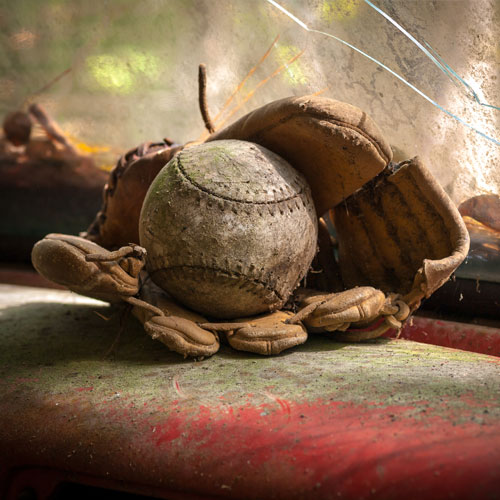
8Consider How Others Could Use Your Items
A hoarding mentality often coincides with difficulty parting with items that you can’t see getting better use elsewhere. One way to combat this is to go through your stuff and think through the ways that the things you have could be used to make someone else’s life better.
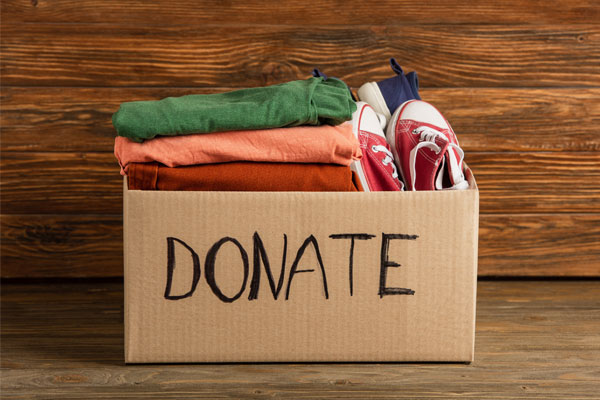 Imagining your coat on a loved one, your old toys in the hands of a child in need, or your paint set being enjoyed by a close friend might just make your stuff easier to part with. I don’t mean to make a Hallmark movie out of giving away hoarded clutter, but I have found this method to work out well in my own life.
Imagining your coat on a loved one, your old toys in the hands of a child in need, or your paint set being enjoyed by a close friend might just make your stuff easier to part with. I don’t mean to make a Hallmark movie out of giving away hoarded clutter, but I have found this method to work out well in my own life.
If I feel challenged by the idea of letting an item go, I find much more peace when I imagine someone else having a positive experience with the item. If you really want to give a lot away, you could even invite family or friends over to declutter alongside you and encourage them to take items home with them as you go. Host a little decluttering party of sorts!
However, thinking about others could also serve as a setback to a natural hoarder. If this mentality is causing you to keep or save things until the next time you see the person you hope to give it to, you might want to let the item go. If you don’t plan to give it to someone else immediately, toss it or donate the item!
9Distinguish The Items You Actually Use
Our memories are fickle, and it can be easy with a hoarding mentality to convince ourselves that we use every single thing we own. The best way to figure out which items you actually use in your day-to-day life is to set things aside as you use them. That way, you’ll be able to visibly see what you use weekly and what you actually haven’t used in years.
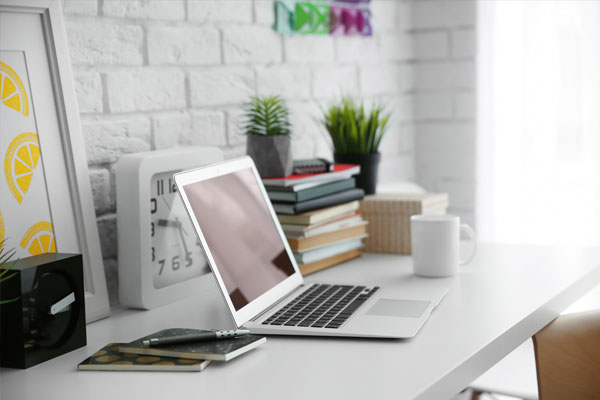
10Go Easy On Yourself
Any habit can be quite the challenge to break. It makes perfect sense that the idea of decluttering after keeping things for years and years would be a challenge, especially if decluttering just isn’t a habit that you’re used to prioritizing.
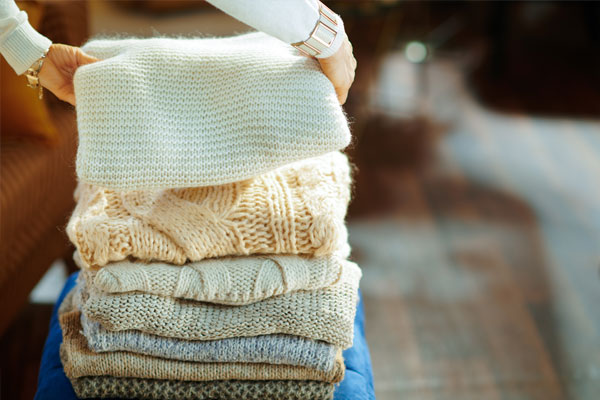 When trying to declutter after you’ve been hoarding, be sure to go easy on yourself. Understand that making decluttering a regular habit will take time, and it might feel overwhelming or exhausting at first.
When trying to declutter after you’ve been hoarding, be sure to go easy on yourself. Understand that making decluttering a regular habit will take time, and it might feel overwhelming or exhausting at first.
Also remember that you likely won’t be able to get it all done in one day or even one weekend, and that’s okay. That’s expected. Give yourself the space to declutter at your own pace. Keep in mind that if you’re feeling overwhelmed or weary, your hoarding habits may be a more serious and less casual problem. Consider talking to a therapist or mental health professional.
Decluttering As A Hoarder: Room By Room Guide

Again, turning your cluttered chaos into an organized home will take time. If you’re a self-professed packrat, it’s likely that you’re collecting items in uncanny nooks and crannies in each room of your home. However, there are some simple ways to tackle common clutter spots in each room of your home.
Decluttering A Hoarder’s Bedroom
In a bedroom, it’s likely that the main clutter culprits will be your closet or under your bed. Hoarding clothes, shoes, bags, and other accessories is more common than you may think.
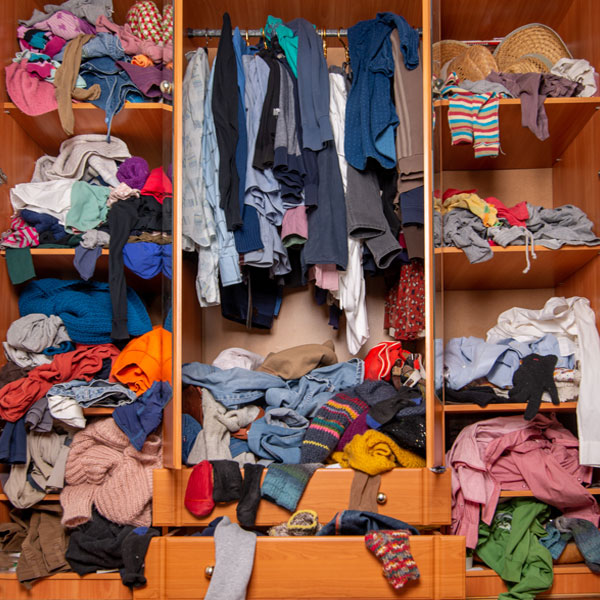 It’s easy to let those collections get out of control. When decluttering a closet, the classic hanger decluttering trick is one of my favorites to use to identify which garments you wear.
It’s easy to let those collections get out of control. When decluttering a closet, the classic hanger decluttering trick is one of my favorites to use to identify which garments you wear.
The way it works is this: when you wear an item and take it off the hanger, you flip your hanger around. That way, you can visibly see which clothes you’ve already worn. Taking the intentional effort to note what you actually wear can help you understand what to get rid of.
When it comes to the other clutter corners in your bedroom, consider an expert decluttering method like the four-box decluttering method to organize your bedroom effectively and expedite the decluttering process. Again, don’t try to tackle every aspect of your bedroom at once. Maybe spend one day clearing under the bed, one day going through your dresser, and so on.
Declutter A Bathroom As A Hoarder
In my opinion, one of the best ways to declutter a bathroom as a hoarder is to set aside the items that you actually use as part of your daily getting ready routine. When you do this, you’ll easily be able to take note of what your needs are and have the freedom to get rid of the rest.
In a bathroom, this could look like emptying one of your bathroom drawers completely and moving over products to the empty drawer as you use them. As the weeks go by, it’ll become obvious which products you use and which ones you don’t.
Decluttering A Kitchen As A Hoarder
The kitchen is another place where clutter can pile up quickly. Like with any other decluttering regimen, you’ll likely want to start by pulling everything out of your kitchen.
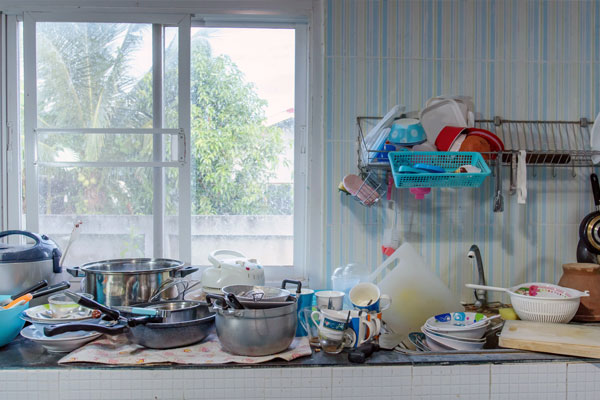 Remove all the dishes from your cabinets and food products from your cluttered pantry, and start sorting your items into smaller categories.
Remove all the dishes from your cabinets and food products from your cluttered pantry, and start sorting your items into smaller categories.
I find that sorting items by the purpose they serve is highly effective when trying to organize a kitchen. It’s very easy to buy and keep many kitchen appliances that serve the same purpose.
At the end of the day, you can probably get rid of that ice shaver and fancy sandwich press.
Decluttering Your Basement, Attic, Or Garage
The basement, garage, and attic are some of the messiest culprits when it comes to hoarding items. It’s very easy, when storing a new item, to simply throw it in these out of sight, out of mind places, telling yourself that you’ll come back for it soon.
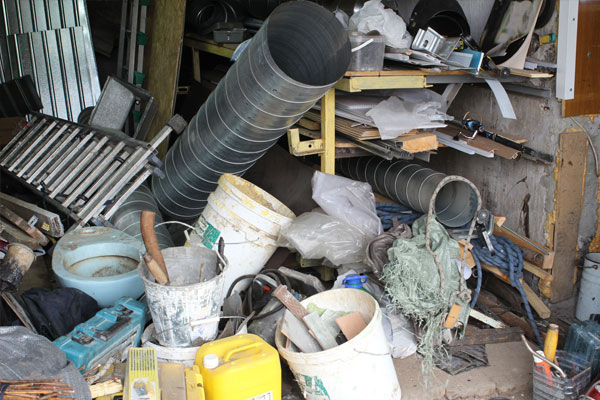 For this reason, tackling these spaces specifically may feel like one of the most daunting tasks yet. The best way to handle these high-density areas is to refrain from trying to declutter them all at once. Break up these immensely cluttered rooms with much smaller, more manageable tasks.
For this reason, tackling these spaces specifically may feel like one of the most daunting tasks yet. The best way to handle these high-density areas is to refrain from trying to declutter them all at once. Break up these immensely cluttered rooms with much smaller, more manageable tasks.
Maybe one day you declutter the trash only, then the next day you focus on paper, and the next, shoes and accessories. By breaking up the tasks into smaller categories, you’ll have these spaces decluttered in no time.
Advice To Help Hoarders, Packrats, And Collectors To Stay Clutter Free

Once you’ve started to make decluttering a regular habit, you don’t want to lose the progress you’ve made! Let decluttering become a regular habit so your home stays clutter-free long term.
Identify The Reason For Keeping Items In The Moment
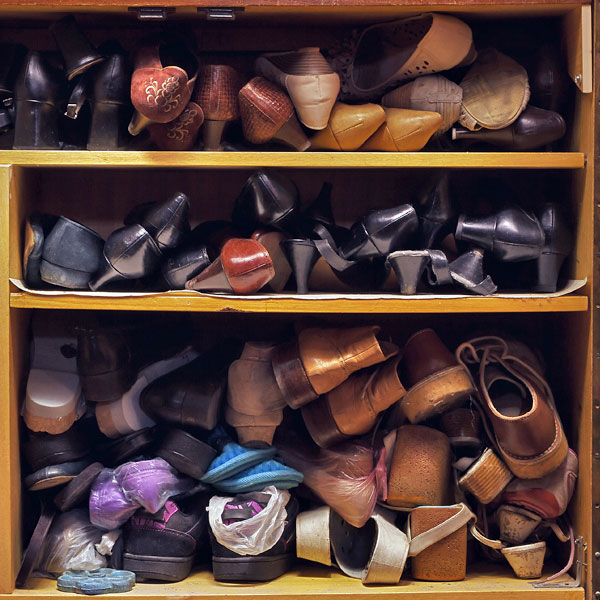
A savvy trick to break the hoarding tendency moving forward is to force yourself to identify the reason for keeping an item the moment you receive it. Before simply tossing items into your closet or under your bed “in case you use them later,” actually identify a specific purpose that you have in mind for the item presently.
Identifying an item’s specific purpose means nailing down a detailed use for the item, time or place you’ll use the item, or an important reason for choosing to hang onto it. For example, you might keep your Kitchen Aid because you plan to bake a cake for your cousin’s birthday, but forgo the blender you keep around just in case you experience a health kick one summer.
Don’t Keep Items That Serve The Same Purpose
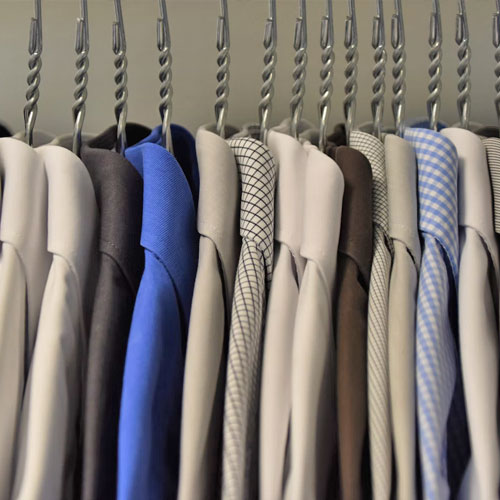
Another way to kick the hoarding habit is to let go of items that serve the exact same purpose. The is an especially hard habit to break for chronic collectors who enjoy keeping many different brands or versions of the same item.
If you’re looking to declutter these items in a mass way, group your belongings together by use. I don’t just mean grouping the kitchen supplies with the kitchen supplies and the yard tools with the yard tools.
Pair things with the exact same function — items that cut, items that clean, items that entertain, and more. Then, go through each pile and get rid of items that have the same use or function or provide you with the same outcome or reward.
Declutter Your Home Regularly
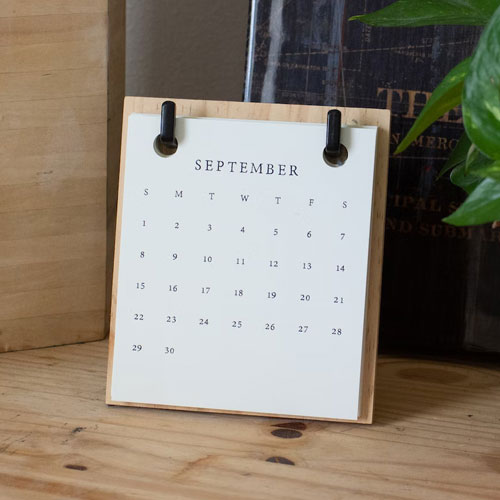
The best way to continuously remove hoarding from your life is to get rid of things frequently. Decluttering often is the biggest key to maintaining a clean, clutter-free house.
In my own life, I try to keep a loose decluttering schedule for each room in my home, so I know when to focus on what areas of my house. To stay away from hoarding habits, I try to never let too many items pile up in one room. When I walk into a room where stuff is starting to pile, I force myself to go through it right then and there.
Why Decluttering Matters If You Tend To Hoard Things

Decluttering is important as a hoarder because the process of decluttering actually gives us the feeling we seek by hoarding. Keeping every little thing in an attempt to feel more security in life and more in touch with happy memories can actually make us feel more burdened and stressed out in the long run.
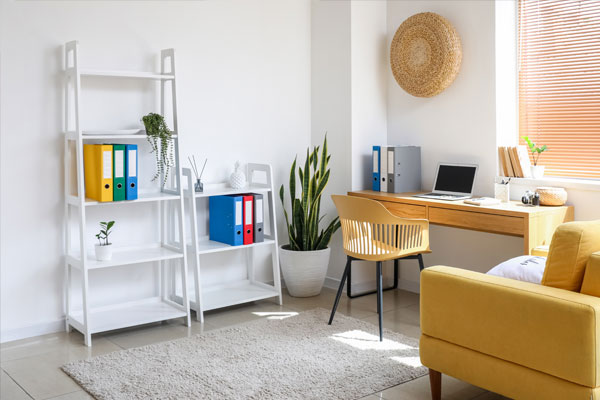 This may seem paradoxical, but getting rid of things can oftentimes make us feel better about ourselves than keeping too much stuff around. Like I said before, the instinct we have to hoard and collect things isn’t initially a negative one.
This may seem paradoxical, but getting rid of things can oftentimes make us feel better about ourselves than keeping too much stuff around. Like I said before, the instinct we have to hoard and collect things isn’t initially a negative one.
It makes sense that, as people, we would want to hold on to things in case we need them down the line, savor cherished memories, and keep things we once got a lot of use out of. However, as an avid minimalist, I stand by the belief that the things we own aren’t substitutes for our memories and experiences.
We don’t need to hoard every little thing in order to be taken care of and lead full lives. At the end of the day, it’s the people around us and the moments we create that add value to the lives we live, not our material possessions.
Remember, casual hoarding is something we all do at some point or another, but if you feel that your hoarding habits are beyond the scope of collecting clutter, your hoarding is out of control or difficult to manage, professional help is available. Reach out to your doctor, therapist, or other mental health professional for guidance.
Your Turn!
- How can you declutter your home as a hoarder?
- Which items will you allow yourself to part with?






I’m hopeless!
I’m not finished reading but thankyou… I can use this like a Bible after church… I am in between downsizing, moving, health apps and who will I “Be” when I’m back to health. Meaning, I will be needing A LOT of help
A very well-written article. Thank you for covering all the bases in a compassionate way. I’m inspired to dive into this clearing process now. It’s nice to feel understood!
What about photo albums? I have about 30! I’m 75 ansmd know they will allend up in the dumpster eventually!
Hi Charlotte, I’m not the authorbut I am someone that adores family photos and a keen geneologist. However, I have witnessed exactly what you mention. Am aunt of mine had taken all the photo albums of my grandparents (nothing wrong with that) but then stored them somewhere damp and they got damaged. But she threw the entire lot out and I felt such sadness at the loss of what was family history and memories of ancestors I’d never known.
I would suggest that you get your albums digitised. That way, there’s a digital copy forever in the Internet cloud that people can access. You could put them on a thumb or hard drive too.
Nowadays not many people print photos. I know that most of mine don’t get printed anymore, but it doesn’t mean that they aren’t treasured.
You could be absolutely right snd that, I’m your passing, your treasured photo albums are not viewed the same way and are discarded. A digital copy however, would likely be seen differently and welcomed. Storing them online or on a hard drive or thumb drive takes up very little space and means that those memories aren’t lost forever.
By far, the best declutter article I have ever read. You make it kind, sensible and doable for the common overwhelmed person. Thank you. I’m saving this.
I find it comforting to take a picture of something that was meaningful and I have decided to remove. Even adding a little poem or phrase that memorializes it helps
Really informative article, took away some good learning lessons from it I’ll put into practice. I’m not a minimalist and don’t wish to be, but I do feel the need to curate wht I have so that the items I do want to have on show are things I love and cherish. If they are buried or hidden behind things that aren’t loved and which have been held onto for no reason other than casual hoarding, it just makes for clutter, not curated maximalist aesthetic. There’s a difference between maximalist and just filling a room to the brim with random stuff on every surface and wall.
Thanks so much for this help. I hope and will try to follow these logical steps. I have decades worth of crap. I call everything in general crap. However, a lot of it is. Wish me luck, and thanks again!